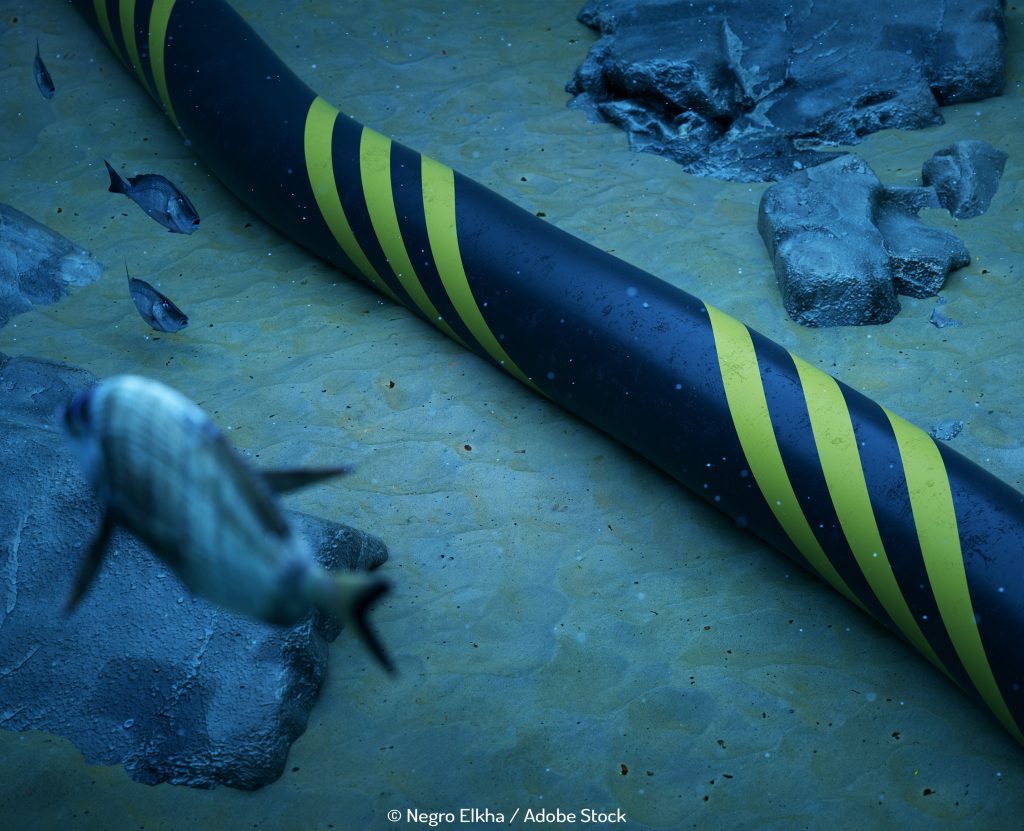Submarine Cables – Our Modern-Day Superheroes
If they were human, submarine communication cables would be well within their rights to feel utterly taken for granted and ignored. When they do their job best, no-one notices. It’s only when that dreaded wheel appears on our screens and you check wifi connections that you even pause to think about how it all works. But how many of us actually do?
“In Guam for example the cables run right over the shoreline,” says Nicole Starosielski from New York University. “People step over them looking for the tourist attraction down the beach. They have no idea the Internet is pulsing right underneath their feet.”
The earth’s floor has been described by the science fiction writer Neal Stephenson as being like a computer motherboard. There are almost 300 separate cable systems which have been dropped off tankers into the ocean and stretch thousands of kilometres on the seafloor between continents. 99% of international data is sent along this vast web of fibre optic tentacles. In the ‘80s cables could manage a megabit a second. Now they can handle 24 terabits. Militaries use the cables to manage long-range weapons tests and remote battlefield operations. The information relayed during the Arab Spring was sent under the sea.
Their usefulness is matched only by their surprising fragility. Submarine cables are about as wide as a garden hose and are easily damaged, and unsurprisingly take a considerable time (three weeks) to repair. When the 2006 Taiwan earthquake shook the seafloor, 80% of its cables were snapped meaning the internet capacity in Hong Kong was halved. It had a catastrophic impact and paralysed the banking sector. In 2008 something – possibly a terrorist attack – broke multiple cables off the coast of Egypt and took out the Internet serving 60m people in India, 12m in Pakistan, 6m in Egypt and 5m in Saudi Arabia. In 2011 the Japanese tsunami destroyed nearly all the cables in the area.
The industry has devised ways to mitigate against these largely uncontrollable problems is to bury them in coastal areas thereby avoiding ships’ anchors, and by having have so many cables in place that losing a handful isn’t the end of the world. “Submarine cables are absolutely critical to supporting the internet, carrying virtually all traffic back and forth across the world,” says Kaveh Ranjbar, chief information officer at RIPE NCC, one of the world’s five regional registries that help ensure the smooth running of the internet. “Their importance means that there are a lot of them, which in turn means the internet has redundancies in place in the event one section does get damaged.”
They’re not new. The first one was installed in 1854, a transatlantic telegraph cable reaching from Canada and Ireland. Tracing the history reveals the story of the development of global development. The concentration is between the US, Europe and Asia. “You will see a big concentration of cables linking the UK and mainland Europe – largely because that’s where much of the initial innovation in the field was happening,” says Liam Fisher, creative lead at London-based digital marketing agency Builtvisible, who’s been researching the submarine cable network. “Both the English Channel and the Rhine in Germany saw a good deal of that initial testing. That’s a big contributing factor towards why Europe is so well interconnected.”
The incredibly high cost of installing them means the more wealthy countries have benefitted first, and in some cases exclusively. However as new lines are developed between countries, others are piggybacking and enjoying the benefits too. The 15,000km Artic Fibre line between Tokyo and London will bring high speed internet to northern Canada and Alaska for the first time.
Or take the Orange Marine’s Sea-Me-We 5, a 20,000km cable that will link Singapore with France and take in 17 other countries who have bought landing point rights. Bangladesh is one. It currently has a current internet bandwidth of 200Gbps. After SMW5 is completed the country will have seven times that capacity. It will cost Bangladesh £48.7m but the difference is can make to a developing country is undeniable. “Fast web access can have transformative powers” says Fisher. “Especially when you think of it in terms of access to education, and better communications during disaster scenarios.”
If human, they might feel unloved and unappreciated, but in reality submarine communication cables are our modern-day superheroes. Next time you see the dreaded wheel, spare a thought for the underwater garden hoses working against the odds to help you order takeout, reach the final level of World of Warcraft or spread a message of hope or for help to the other side of the globe.


